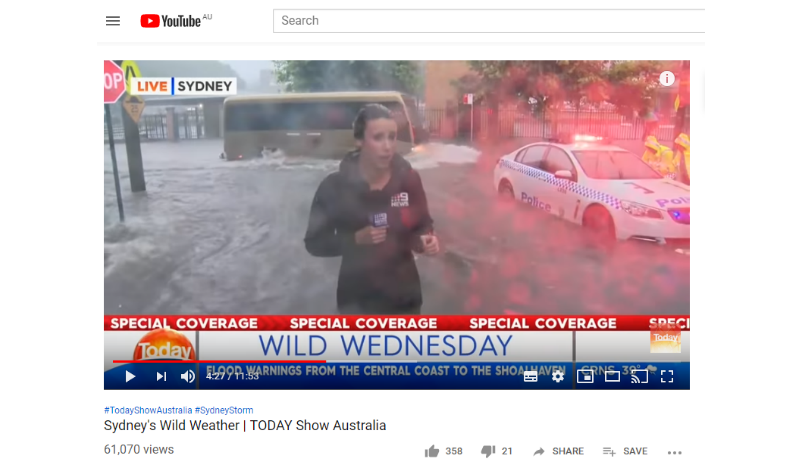There is little disagreement that entering floodwater is risky, whether in a vehicle or on foot. There is usually little or no visibility of what is under the surface and even shallow water with moderate flow can make vehicles unstable or sweep people off their feet. In addition, floodwater will often contain contaminants and debris. Therefore, the safest course of action is to avoid entering floodwater. Indeed, the most pervasive risk communication message is ‘If it’s flooded, forget it’. This clear, unambiguous message is good at getting people’s attention, but it is unclear whether it actually changes behaviour. Research with Australian public, floodplain management professionals, State Emergency Services (SES) personnel, and other emergency management experts has identified a number of challenges to floodwater safety and risk communications. Using a combination of research evidence and expert opinion, this paper discusses four pressing challenges and highlights some of the approaches being taken to help address them.
Based on a presentation at the Australia New Zealand Disaster Management Conference 2019 and a paper presented at AFAC19 – the annual conference of AFAC and the Bushfire and Natural Hazards CRC.
Introduction
Flooding is a significant cause of death and accounts for the second highest number of fatalities due to natural hazards in Australia, after heatwaves. Analysis of Australian flood-fatality data has shown that males, and children/young adults (under 29 years of age) are overrepresented in these statistics (79 per cent, and 43 per cent, respectively) (Haynes et al. 2017). The two activities linked to the highest proportions of flood deaths are driving through floodwater and recreating in floodwater. Further research on vehicle-related flood fatalities in Australia (Ahmed et al. 2019) found that 96 people died in 74 incidents during 2001–2017, with older males (aged 50–59 and 70–79) being the highest-risk group.
Literature reviews on public risk perception and behaviour in floodwater have shown that decisions to enter floodwater are multifactorial and complex (Becker et al. 2015, Ahmed, Haynes & Taylor 2018). Therefore, risk communication and behaviour change are equally challenging. Research on the evaluation or effectiveness of risk communications in relation to flood is limited, with the work of Hamilton and colleagues (2017) being a rare example. This paper draws attention to the challenges in floodwater safety and risk communication and document the approaches that have been taken, and are currently planned, to address them.
Overview
This paper is based on a panel discussion held at the Australia and New Zealand Disaster and Emergency Management conference (ANZDMC) in June 2019. All authors (except Haynes) were panel members and provided perspectives on the set of challenges based on research, operational, organisational and personal experiences. Selection of the four challenges arose from findings from recent Australian research data and issues already identified as problematic for flood-risk communication.
Each challenge is discussed by outlining the challenge with attention given to central questions and relevance for flood-risk communications. A summary of research evidence quantifies and details the issue and expert opinion expands on the context and approaches used, or planned to be used, to address the challenge.
This research is undertaken in collaboration with SES end user organisations from across Australia and was approved by the Macquarie University Human Research Ethics Committee (Reference number: 5201700133). As this research is still underway, most of the data presented are early findings and not published in academic literature. Data analysis and reporting is ongoing, with published outputs available on the Bushfire and Natural Hazards CRC project webpage.1
Expert opinion was provided by the co-authors, representing three SES agencies, the Australian Broadcasting Corporation (Australia’s national emergency broadcaster), Flood Management Australia (the peak body for floodplain management) as well as local government.
The four challenges addressed:
- What is floodwater?
- Why are people entering floodwater?
- Is it OK for emergency services and other professionals to enter floodwater?
- Water is fun!
The intention here is not to solve the challenges presented, but to outline the complexities of each area. Questions are raised and recent data are provided to contextualise and quantify what is known. Expert opinion identifies what has been, or is being, done to address various aspects. The expert opinion was scoped loosely during conference preparation discussion where the challenges were shortlisted. The content presented here was provided in a single 90-minute panel session and is not exhaustive. In addition, as the challenges are interrelated, some editing of content has been undertaken to allocate discussion points to only one challenge area to avoid repetition.
Challenge 1: What is floodwater?
- Central questions: What do we actually mean by ‘floodwater’? Is all floodwater dangerous? Do ‘experts’ and the public have a shared mental model of what floodwater is? When does rainwater on the road become a flood?
- Relevance for communication: One person’s ‘flood’ is another person’s ‘puddle’. If people are advised not to enter floodwater, do they think this message applies if the water they are confronted with does not match the imagery in flood-risk communication materials? Do those communicating flood risk to communities have a shared understanding of what is ‘floodwater’? How consistent is risk messaging?
Research evidence
Having a clear definition of ‘floodwater’ is essential when conducting research on people’s behaviour around floodwater and their potential responses to flood-risk communication. Use of a definition helps ensure that research participants are recalling comparable situations when questioned. In initial searches, no agreed definition of ‘floodwater’ was found for the context of floodwater on a road or a flooded road. To scope this issue, the research team conducted an opportunistic survey with attendees at the 2017 Floodplain Management Australia conference to ascertain the consensus between floodplain management experts (primarily from local government, emergency services organisations and flood consultants). Thirty-nine delegates completed a survey and, although 44 per cent (n=17) had formal definitions of ‘floodwater’ in their organisations, there was limited consensus. Definitions were used in different contexts and for different purposes. However, 72 per cent (n=28) felt it was important to have a national or state-level definition of ‘floodwater’ in the context of public risk communication and education.
Reviewing the definitions provided, and in consultation with NSW SES, a definition of ‘floodwater on a road’ was agreed for use in research on driving through floodwater (Figure 1).

Figure 1: Floodwater on road definition.
A sample of SES personnel (n=1203) and public participants (n=2196) were shown four photographs of water over a road. Participants were asked whether the roads shown in the photographs were ‘flooded’ and to indicate why they thought it was (or was not) flooded. This allowed for the collection of words used by people and experts to describe the attributes of floodwater and the cues being identified. This provided a useful lexicon for analysis and possible use in risk communications. Figure 2 shows the consolidated word clouds generated from this research. References to many attributes in the scenes provided were common, such as water depth. However, SES personnel were more likely to mention water flow and details about the context, for example road type (causeways), water characteristics (wash from other vehicles), flood markers, points of reference, depth indicators and drainage.
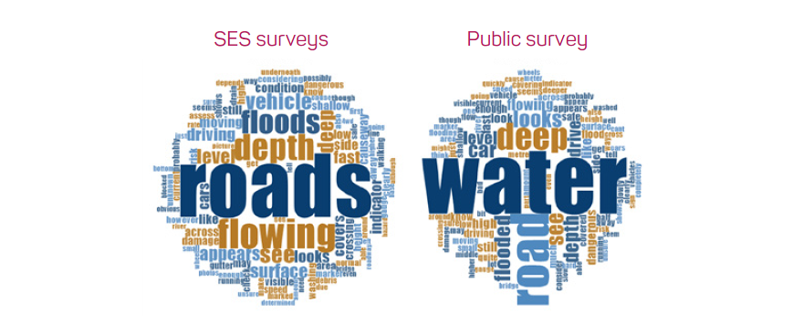
Figure 2: Word clouds describing attributes of floodwater on roads.
Expert opinion
In the panel session, it was acknowledged that defining floodwater is complex. Not being able to see what is below the surface of even shallow or benign-looking floodwater means entering any type of floodwater is dangerous.
There was consensus that communities could be empowered to make decisions about safety by having the right information and knowledge to identify dangerous features of floodwater. This approach has been used in communication campaigns to date. These include not knowing what is below the surface or in the water (‘Know the dangers’, Queensland Fire and Emergency Service; ‘You don’t know what you’re getting into’, VICSES) and understanding the impact of water flow on vehicle stability (‘15 to Float’, VICSES).
In terms of the location or context of flooding, there was discussion about economic and other drivers that impact on communities. Specifically, consideration was given to agricultural and rural communities that could be flooded for long periods or on multiple occasions and need to keep businesses running. Although this did not directly affect the definition of floodwater, it influenced how communities might view and respond to floodwater on roads. It also influenced how road closures could be managed to balance public safety with economic functioning. Issues were discussed relating to the consistency of messaging and response to floodwater in large states like Queensland. The effects of slow-moving floodwaters means messaging must be adapted for different areas.
For road closures, decisions about when a road is closed, or not, was also discussed. Although some jurisdictions have clear directives relating to the depth of floodwater required to close a road, there was discussion about how realistic the procedures are for closing and opening roads in a timely way, particularly given this is largely a manual operation. Finally, there was consideration of the impact on road safety of mud and debris left on roads after floodwater has subsided. This raises interesting questions that reframe the challenge to ‘When does a road stop being ‘flooded’? and ‘When is a road safe to use again’? Just because the water is no longer there, does not mean the road is safe for use. These points reflect some of the pressures on road managers to reopen roads following a flood.
Challenge 2: Why are people entering floodwater?
- Central questions: Why is it that, despite advice and warnings, people are still entering floodwater? What are people doing? What are the consequences of entering floodwater? Why are people disregarding risk messages?
- Relevance for communication: If we know what people are doing, or why they are entering floodwater, we can find additional levers to influence their behaviour. Only by knowing what people are doing when they enter floodwater do we know what we are asking people to ‘forget’ in the message ‘If it’s flooded, forget it’. How can we make risk messaging compelling?
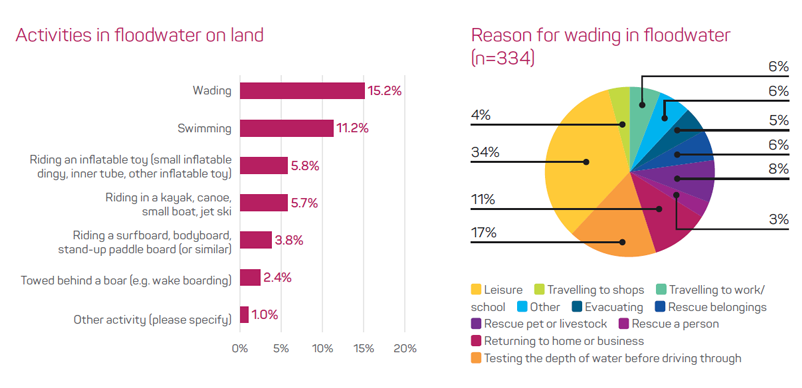
Figure 3: Activities in floodwater on land and reasons for wading in floodwater on land.
Note: Survey: n=2196. Respondents could indicate more than one response.
Research evidence
Recent survey research (n=2196) using the floodwater on road definition (Figure 1) showed that 54 per cent of respondents had driven, or been driven, through floodwater in the previous five years. Of these, 82 per cent had driven through floodwater only once (41 per cent) or two–three times (41 per cent). However, a small proportion (7 per cent) had driven through floodwater more than six times. Those who were more likely to have driven through floodwater included males, those who rated their driving ability as high and those who drive more than 15 hours per week. These findings suggest that confidence, experience and opportunity are linked to this behaviour.
In addition to driving through floodwater, 28 per cent of respondents had engaged in activities in floodwater on land and 19 per cent had engaged in activities in flooded rivers. These data refer to ‘ever’ having engaged in such activities and included a wide range of activities such as wading, swimming, kayaking and riding on inflatables. Figure 3 shows data relating to activities in floodwater on land and shows the breakdown of the reasons why people were wading in floodwaters.
Regarding flood-risk communication, one of the most interesting observations from data in Figure 3 is the range of reasons given for wading in floodwater. Detailed breakdowns provide insights into why people take this risk. In this example, only around one-third were entering floodwater for leisure reasons and, therefore, advising people not ‘to play’ in floodwater might feasibly be ignored, or discounted, by two-thirds of this group in this situation.
Another aspect related to the consequences of driving through floodwater. Survey respondents who had driven through floodwater in the previous five years were asked to provide details about one of these events. This included information such as the depth and flow of water, the type of road and location, the feelings of others in the vehicle about the risk and the reasons for driving through floodwater. Included was a question about the outcome of driving through the floodwater; summarised in Figure 4.
Figure 4 shows information of obvious relevance for risk communication. A majority of respondents who drove through floodwater reported no (vehicle-related) consequences of their actions. Consequently, firm and definitive messages of ‘never drive through floodwater’ are unlikely to resonate with these individuals as the message conveyed will conflict with the personal experiences they draw on to process these messages. Figure 5 shows comments provided by SES respondents. These responses capture some of the challenges faced when discouraging people from driving into floodwater, which were reiterated by the expert panel members at the conference.
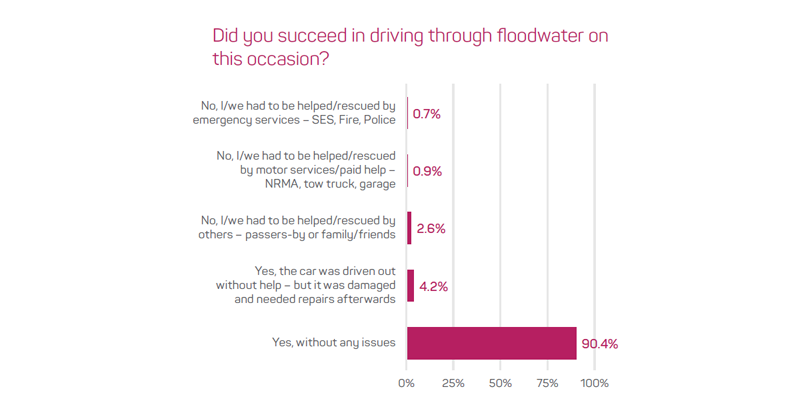
Figure 4: Outcomes of driving through floodwater (n=1172).
Expert opinion
It was acknowledged that a blanket message is helpful and providing a strong, consistent message was important for the emergency services organisations. However, messaging was not a ‘silver bullet’. Queensland Fire and Emergency Service had tested the ‘If it’s flooded, forget it’ message and found that awareness was high (86 per cent of people tested). This suggested there was ‘cut through’ to audiences. However, concern was raised that people tended to ‘opt out’ of the message, for example feeling that it didn’t apply to them when they lived in ‘one road in-one road out’ situations. Harmonising messages was highlighted in the context of emergency broadcasting where efforts had been made, unsuccessfully, to achieve nationally consistent community service announcements.
It was suggested that people do understand the risks associated with floodwater but they weigh these up against other risks. An audience member suggested that perhaps the risks associated with driving through floodwater were not regarded as high in comparison to other road-related risks such as speeding and drink driving that result in larger numbers of fatalities. Therefore, warnings about driving through floodwater were more readily dismissed.
The use of localised and area-specific messaging and new technologies could be used to combat apathy and lack of engagement in flood-risk messaging. Localised and tailored messaging during a flood can be challenging for broadcasters who need to keep content interesting for their audiences who live across large areas. However, directing people to social media and online information is a workable approach. In Queensland, local governments have been successful with community engagement through posting timely local information onto online ‘dashboards’ and using webcams in local black spots.
Difficulties in visualising and personalising flood risk was another reason why people ignore risk messaging. A solution to this might lie in the use of virtual reality or augmented reality. The ‘wall of water’ simulation of floodwater used by The Weather Channel in 2018 to visualise the effects of Tropical Cyclone Florence2 was an innovative use of this technology that gripped the public interest. This approach is being implemented in flood risk campaigns in Western Australia and NSW. The Department of Fire and Emergency Services in Western Australia is using a suite of newly developed messages in community engagement initiatives. These messages were developed using research and a behavioural-economics approach that has been demonstrated to be powerful for influencing human behaviour. The messages are being incorporated into an augmented reality flood exhibit in the Education and Heritage Centre. In NSW, a similar visualisation technique is being used as part of a campaign in the Hawkesbury-Nepean Valley to visualise flooding in local areas. The NSW SES ‘The Risk is Real’ campaign uses local landmarks to reinforce the message that flooding can happen ‘here’.

Figure 5: Quotes from emergency management professionals regarding people driving through floodwater.
Challenge 3: Is it OK for emergency services and other professionals to enter floodwater?
- Central questions: What is the advice to emergency services personnel (and other professionals) about entering floodwater? Why do they enter floodwater? To what extent do they think about the consequences? Does this behaviour influence the public’s views of entering floodwater?
- Relevance for communication: If the public is told never to enter floodwater, does seeing emergency services personnel, journalists and other professionals, driving or wading in floodwater undermine the risk message? Do contradictory cues affect how messages are processed and acted on?
Research evidence
The negative influence of seeing journalists and others entering floodwater has long been a subject of conjecture. Such risky actions reinforce a negative behaviour (Figure 6) that contradicts official advice and could influence the public; normalising the behaviour and reducing the perception of risk. Campbell (2014) investigated this issue in a Churchill Fellowship project and the effect of conflicting cues on protective action is the subject of current research by the BNHCRC (Dootson et al. 2019).
When flood events occur, people are frequently exposed to images in the media of emergency services personnel and other professionals driving, standing in and moving round in floodwater. Generally, SES personnel are discouraged from driving through floodwater and most emergency services agencies have operating procedures or specific guidance in this area. Surveys of SES personnel in one jurisdiction (n=637) indicated that 35 per cent (n=223) of the respondents had driven through floodwater in an SES vehicle (as a driver) in the previous two years, with a small proportion (5 per cent, n=32) driving through floodwaters seven or more times. In this study, respondents were asked to provide details about a specific and recent incident of driving through floodwater. Figure 7 shows their responses about the factors that influenced their decision to drive through floodwater.
Figure 7 illustrates that, although urgency of the journey and a desire to complete one’s duty are included in the list, confidence, familiarity and risk assessment are strong influencing factors. Only a quarter of respondents (25 per cent, n=46) were undertaking emergency response activities under ‘lights and sirens’ at the time they drove through floodwater. The public might attribute the urgency of operational situations to be the reason for this behaviour and may feel it is justified. However, organisational perspectives of work, health and safety duty-of-care, cost of vehicle repairs and organisational reputation are pertinent to consider.
Figure 6: A still image from a Channel 9 Today Show online video reporting bad weather in Sydney, NSW (27 Nov 2019) and showing professionals standing in and driving through floodwater (journalist, police, bus driver).
Expert opinion
SES personnel are directed not to enter floodwater and are taught dynamic risk assessment and other approaches to manage the safety of crews and to reduce unnecessary risks. However, they are not exempt from prosecution. It is acknowledged that operational requirements and expectations that personnel would do their duty added to pressures to drive through floodwater at times. It was also noted that in situations where, in particular, a child might be at risk of drowning, SES personnel might enter floodwater and pay less attention to their own safety. One panel member made an interesting point that it was regarded as ‘OK’ for firefighters to go into fires but ‘not OK’ for SES personnel to go into floodwater as part of their duties.
Aspects of personal safety were extended to the behaviour of journalists, where consideration of safety could be neglected in pursuit of the best footage. However, this situation is changing due to a ‘safety before story’ approach being adopted and managers reinforcing safety messages for staff. Australia’s work, health and safety regime and the threat of litigation and negative financial effects of workplace injuries could ultimately be the most powerful drivers of change. As a result, risk assessment processes are being tightened, training and education is being improved and journalists are increasingly being called-out by the public when their actions are less socially acceptable. This is supporting positive changes in this area.
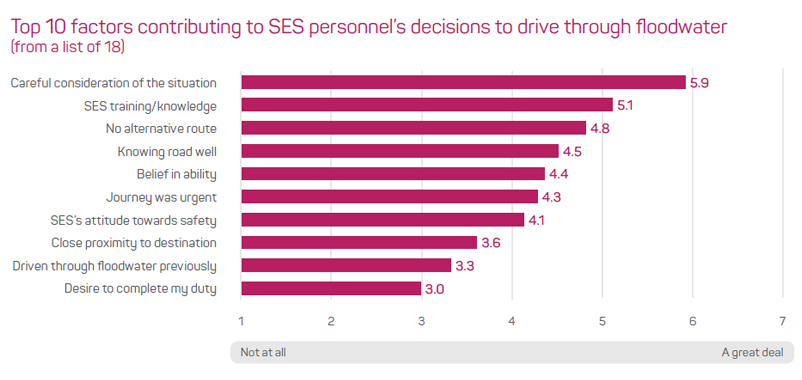
Figure 7: Factors contributing to decisions to drive through floodwater (SES personnel, n=695). Mean ratings of the degree of influence of each listed item are shown (ranging from 1 ‘not at all’ to 7 ‘a great deal’).
Challenge 4: Water is fun!
- Central questions: Water-based activities have a significant place in Australian culture, so how can ‘floodwater’ be reframed in a compelling way to make people want to stay away from it? Why is it harder to ‘sell’ the flood hazard, compared to the bushfire hazard?
- Relevance for communication: Australians are proud of ‘making good from bad’. In floods, communities want to remain positive and upbeat. How can the message of not entering floodwater be enforced without breaking community spirit? We have a water culture where parks and dams can be places for recreation. But in flood, the message is not to recreate in these places.
Research evidence
The research evidence for this challenge emerged from qualitative interviews with emergency management personnel. Figure 8 shows a quote that expresses the dilemma for those responsible for public safety and speak to the deep-rooted aspects of this challenge. Mainstream media channels and members of the public broadcasting videos on social media with images of people ‘having fun’ (despite the inconvenience or hardship of the flood) exacerbate the issues for emergency services organisations when warning people not to enter floodwater.
![Figure 8: [Flood]water is fun! Media images of people in floodwater and quotes describing some challenges of promoting the message to stay out of floodwater.](/media/7244/ajem_102019-14h.png)
Figure 8: [Flood]water is fun! Media images of people in floodwater and quotes describing some challenges of promoting the message to stay out of floodwater.
Expert opinion
Members of the panel recognised this as a challenge, albeit more abstract than the other three. People have an affinity and familiarity with water, especially for recreation. Haynes and colleagues (2017) showed that young adults and children factor disproportionately in the flood fatalities related to recreating in floodwater. Thus, they are a significant target audience for risk messaging in this area.
To offset ‘fun policing’ and improve message uptake, approaches taken have linked into the ‘larrikin culture’ and used humour as a way to convey risk messages. Examples include the 2013 VICSES ‘poo’ campaign (‘If you knew what was in it, you wouldn’t go in it’) and the 2017 NSW SES ‘Don’t be a #Floodwit’ social media campaign.
Generally, communication campaigns to discourage playing in floodwater focus on what is in floodwater as a way to discourage people from wanting to go into it (e.g. ‘You don’t know what you’re getting into’ by VICSES). Other approaches focused on younger children and included games and animations, such as the 2019 Wollongong City Council ‘Don’t Play in Flood Water’3 animation and the VICSES FloodSafe game.4 VICSES is developing a campaign that will target teens, ‘Don’t flirt with floodwater’.
Two approaches directed at adults to tackle the ‘water is fun’ challenge involve drawing attention to parents, and society in general, to emphasise that everyone has a part to play in modelling good behaviour regarding floodwater. Adults need to set a good example to children. The panel discussed the power of narratives and the use of victim and survivor stories to personalise the negative effect of entering floodwater and the ways it affects those who make poor decisions. For example, ‘Near Misses From Real Floodwater Stories’ by NSW SES5 in 2017 was based on true stories told by the actual person and re-enacted in videos. These stories provide insights into the consequences of entering floodwater.
Conclusions
This paper considered four significant challenges to floodwater safety and risk communication. While other important areas, such as the risks of flash flooding and sheltering behaviour in floods remain unexamined, they were considered for inclusion. This paper documents the issues facing communicators of emergency messages using research data to consider issues and expert opinion. These challenges highlight the complexity of flood-risk communication that must work at-scale and across different geographic and social contexts. These may run counter to cultural norms, such as playing in and around water. Despite these challenges, many campaigns have been implemented and approaches taken that have been engaging. There are also new and innovative approaches on the horizon that augur well for improved public safety during floods.



